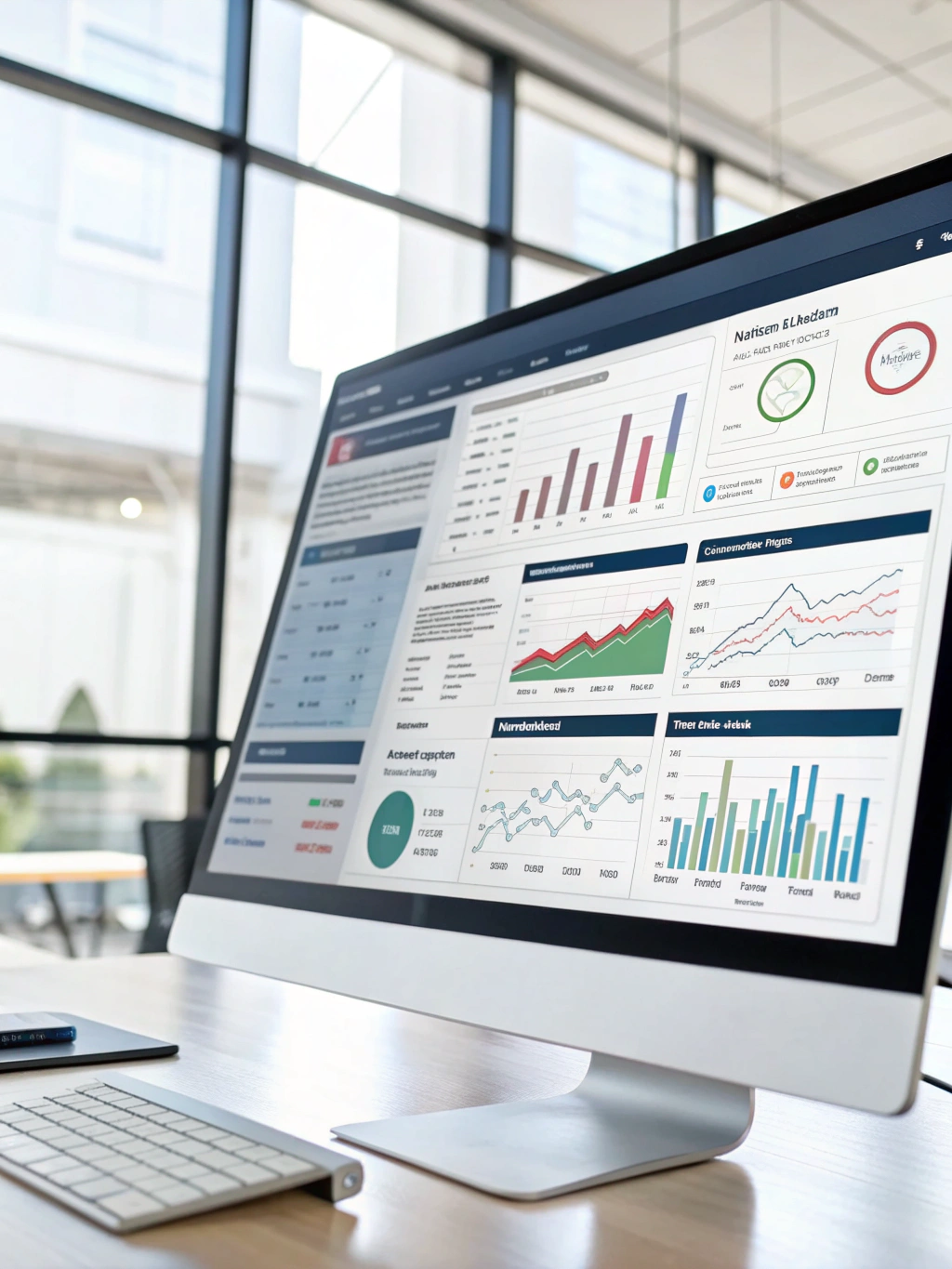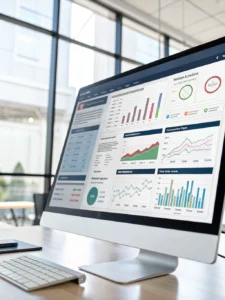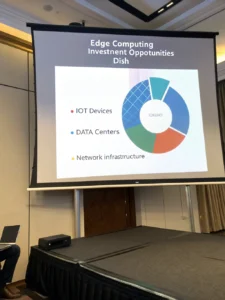Big Data Solutions for Business Intelligence
The Big Data Puzzle: Are You Missing the Pieces?
Have you ever wondered how businesses make sense of the sheer volume of information they generate every single day? From customer interactions to sensor data and online activity, the world is awash in data. This flood of information is the essence of Big Data, and harnessing its power is no longer a luxury – it’s a necessity for survival and growth in today’s competitive landscape. But are you truly leveraging the potential of this data deluge? Many organizations are struggling, highlighting a crucial need to understand the core concepts and best practices surrounding Big Data. This comprehensive guide will delve into the intricacies of Big Data, explore its evolving trends, and provide actionable strategies to navigate this transformative technology.
Key Concepts & Trends

Big Data isn’t just about the amount of data; it’s about the variety, velocity, veracity, and value it holds – often referred to as the 4Vs. The volume is undeniably massive, often measured in petabytes and exabytes. The variety encompasses structured (like relational databases), semi-structured (like JSON), and unstructured data (like text, images, and videos). The velocity refers to the speed at which data is generated and processed, often requiring real-time analytics. Veracity addresses the trustworthiness and accuracy of the data, and finally, value is the ultimate goal – extracting meaningful insights that drive business decisions.
Several key trends are shaping the Big Data landscape:
- Cloud-Based Solutions: The rise of cloud computing has democratized access to powerful Big Data processing and storage capabilities. Platforms like Amazon Web Services (AWS), Microsoft Azure, and Google Cloud offer scalable and cost-effective solutions.
- Artificial Intelligence (AI) and Machine Learning (ML): AI and ML algorithms are becoming increasingly integral to Big Data analytics, enabling predictive modeling, anomaly detection, and automated insights.
- Real-Time Analytics: The demand for instant insights is fueling the adoption of real-time data processing frameworks like Apache Kafka and Apache Flink.
- Data Lakes: Data Lakes are gaining traction as central repositories for storing all types of data in its raw format, providing flexibility for various analytical needs. You can explore more about Data Lakes at Data Lakes.
- Edge Computing: Processing data closer to its source (e.g., IoT devices) through edge computing reduces latency and bandwidth requirements, opening up new possibilities for real-time applications.
Data & Market Insights
The Big Data market is experiencing robust growth. According to a recent report by IDC, global spending on Big Data and analytics is projected to reach over $250 billion by 2027, representing a significant compound annual growth rate (CAGR). This growth is driven by the increasing need for businesses to gain a competitive edge through data-driven decision-making.
Consider the retail industry. Companies like Amazon and Walmart leverage Big Data analytics to personalize customer experiences, optimize inventory management, and predict demand. Their ability to analyze vast amounts of purchase history, browsing behavior, and demographic data allows them to tailor recommendations and promotions, leading to increased sales and customer loyalty.
Another compelling example is in healthcare. Hospitals and research institutions are using Big Data to analyze patient records, identify disease patterns, and accelerate drug discovery. This has the potential to revolutionize treatment approaches and improve patient outcomes.
Smarter Strategies & Alternatives
Instead of simply collecting data, businesses need to implement smarter strategies for its analysis and utilization. This involves:
- Defining Clear Business Objectives: Before embarking on a Big Data initiative, clearly define the business problems you aim to solve.
- Investing in the Right Tools and Talent: Choose Big Data platforms and tools that align with your specific needs and ensure you have skilled data scientists and analysts.
- Prioritizing Data Quality: Implement processes for data cleansing, validation, and governance to ensure the accuracy and reliability of your insights.
- Exploring No-Code/Low-Code Analytics Platforms: For businesses with limited technical expertise, no-code/low-code platforms offer accessible ways to perform data analysis and visualization.
While established platforms are powerful, consider exploring open-source alternatives like Apache Spark and Hadoop for greater flexibility and cost-efficiency, especially for organizations with strong in-house technical capabilities.
Use Cases & Applications
The applications of Big Data are vast and continuously expanding. Here are a few key areas:
- Customer Relationship Management (CRM): Analyzing customer data to personalize marketing campaigns, improve customer service, and predict customer churn.
- Supply Chain Optimization: Using Big Data to forecast demand, optimize logistics, and reduce costs.
- Fraud Detection: Identifying fraudulent transactions in real-time by analyzing patterns and anomalies in financial data.
- Predictive Maintenance: Analyzing sensor data from equipment to predict potential failures and schedule maintenance proactively.
- Personalized Medicine: Tailoring medical treatments to individual patients based on their genetic makeup and health history.
Startups are also leveraging Big Data in innovative ways. For instance, companies in the financial technology (FinTech) sector are using machine learning to develop sophisticated fraud prevention systems and algorithmic trading strategies.
Common Mistakes to Avoid
Several common pitfalls can derail Big Data initiatives:
- Lack of a Clear Strategy: Implementing Big Data without a well-defined strategy and business objectives often leads to wasted resources and disappointing results.
- Poor Data Quality: Analyzing inaccurate or incomplete data can lead to flawed insights and poor decision-making.
- Insufficient Technical Expertise: Attempting to manage and analyze Big Data without the necessary technical skills can be challenging and costly.
- Ignoring Data Security and Privacy: Failing to implement robust security measures can expose sensitive data to breaches and regulatory violations.
To avoid these mistakes, prioritize planning, invest in data quality initiatives, and build or acquire the necessary technical expertise.
Maintenance, Security & Long-Term Planning
Maintaining a Big Data infrastructure requires ongoing effort. This includes regular software updates, performance monitoring, and data backups. Robust cybersecurity measures are paramount to protect sensitive data from unauthorized access. Compliance with data privacy regulations like GDPR and CCPA is also crucial.
For long-term planning, consider the scalability of your Big Data solutions to accommodate future growth. Regularly review your data governance policies and adapt them as needed.
Summary & Key Takeaways
Big Data is transforming industries and creating new opportunities for businesses. By understanding the key concepts, embracing emerging trends, and implementing smart strategies, organizations can unlock the immense value hidden within their data. It’s not just about collecting more data; it’s about extracting actionable insights that drive strategic decisions and competitive advantage.
Ready to delve deeper? Share your thoughts on the challenges you’re facing with Big Data in the comments below! Don’t forget to explore our resources on [Big Data] to learn more about leveraging this powerful technology for business intelligence.
FAQs
Is it too late to invest in crypto? While the crypto market has experienced volatility, many experts believe there’s still potential for long-term growth, particularly in areas like blockchain technology and decentralized finance (DeFi). However, it’s crucial to conduct thorough research and understand the risks involved.
How can small businesses use AI? Small businesses can leverage AI through readily available tools for tasks like customer service chatbots, marketing automation, and data analysis. Many cloud platforms offer affordable AI services tailored for small and medium-sized enterprises.
What tech stacks scale best? Cloud-native tech stacks built on platforms like Kubernetes and utilizing serverless computing are generally the most scalable for Big Data workloads.
Share this content:














Post Comment